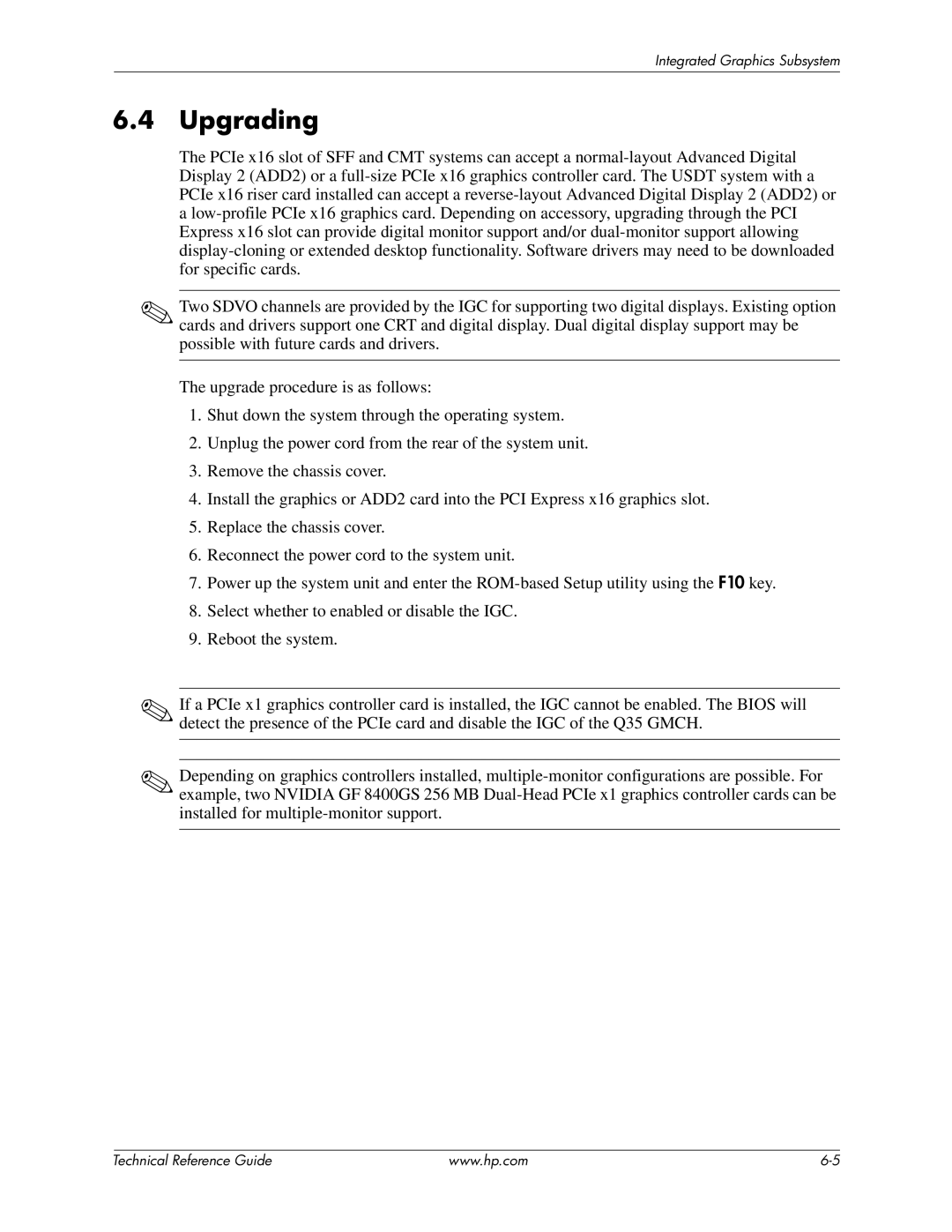
Integrated Graphics Subsystem
6.4 Upgrading
The PCIe x16 slot of SFF and CMT systems can accept a
✎Two SDVO channels are provided by the IGC for supporting two digital displays. Existing option cards and drivers support one CRT and digital display. Dual digital display support may be possible with future cards and drivers.
The upgrade procedure is as follows:
1.Shut down the system through the operating system.
2.Unplug the power cord from the rear of the system unit.
3.Remove the chassis cover.
4.Install the graphics or ADD2 card into the PCI Express x16 graphics slot.
5.Replace the chassis cover.
6.Reconnect the power cord to the system unit.
7.Power up the system unit and enter the
8.Select whether to enabled or disable the IGC.
9.Reboot the system.
✎If a PCIe x1 graphics controller card is installed, the IGC cannot be enabled. The BIOS will detect the presence of the PCIe card and disable the IGC of the Q35 GMCH.
✎Depending on graphics controllers installed,
| Technical Reference Guide | www.hp.com |
